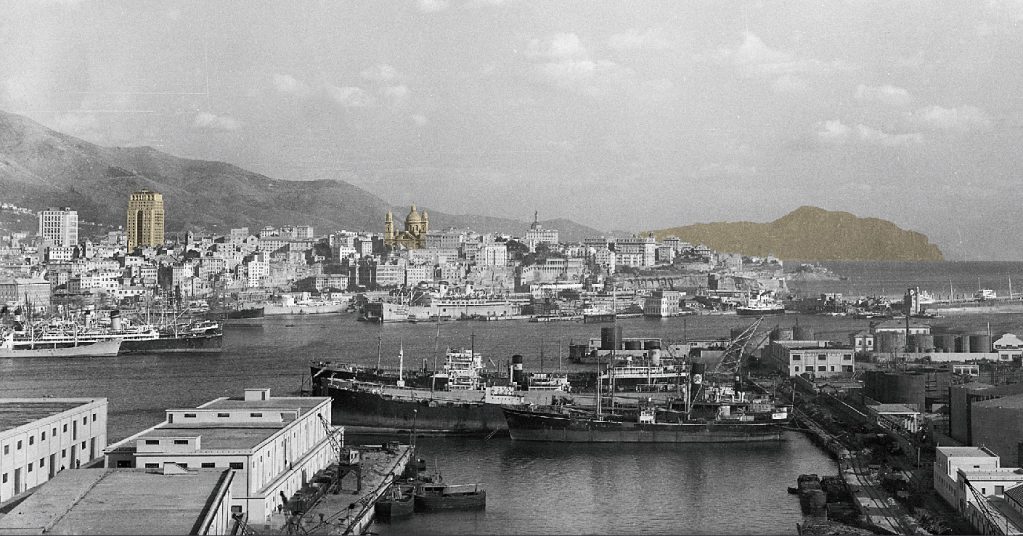Il Levante cittadino

Dalla Basilica di Carignano ai Magazzini del Cotone
Davanti a voi potete facilmente riconoscere il promontorio di Portofino e il profilo della collina di Carignano che chiude a est lo storico bacino portuale della città. Esterna alle più antiche mura cittadine, a metà del Cinquecento la parte alta del colle era proprietà della nobile famiglia Sauli. Questi affidarono all’architetto Galeazzo Alessi la progettazione della propria cappella gentilizia, che diventerà la celebre basilica di Santa Maria Assunta “in Carignano”, appunto. Colossale per dimensioni, il suo profilo con cupola e campanili è elemento identitario e riconoscibile nel panorama cittadino. Il progetto, a pianta centrale, riscosse notevole interesse in tutta Europa tanto da diventare modello e venir ripreso integramente nella chiesa dell’Escorial, il monastero reale dei sovrani spagnoli.
Il sottostante quartiere di Portoria, una delle aree più popolari della città, fu demolito a più riprese nel Novecento per dar spazio a nuovi edifici tra i quali la Torre Invernizzi Piacentini. Completata nel 1940, fu il primo grattacielo d’Europa a superare i 100 metri d’altezza. Alzando lo sguardo verso i monti, è possibile osservare tratti delle mura del Seicento e numerosi forti sulle alture. In prossimità del mare, al porto vecchio, vi è il lungo edificio detto dei “Magazzini del Cotone”, sorto come sede dei Magazzini Generali alla fine del XIX secolo.
The eastern part of the City (Levante)
From the Basilica di Carignano to the Cotton Warehouses
In front of you, you can easily recognise the promontory of Portofino and the outline of the hilltop neighbourhood of Carignano, which encloses the city’s historic harbour basin to the east. Situated outside the oldest city walls, in the mid 16th century the upper part of the hill was owned by the noble Sauli family. The Saulis commissioned architect Galeazzo Alessi to design their family chapel, which later became the famous basilica of Santa Maria Assunta “in Carignano”. Colossal in size, its dome and bell towers are distinctive elements of the cityscape. The church’s central plan design attracted considerable interest throughout Europe, so much so that it was copied in full for the church of the Escorial, the royal monastery of the Spanish sovereigns.
The Portoria district below, one of the city’s most popular areas, was demolished in the 20th century to make room for new buildings, including the Invernizzi Piacentini Tower. Completed in 1940, it was the first skyscraper in Europe to exceed 100 metres in height. Looking up towards the mountains, you can see sections of the 17th century walls and numerous forts on the hills. Close to the sea, in the old port, stands the long building known as Magazzini del Cotone (Cotton Warehouses), built in the late 19th century as the headquarters of Magazzini Generali (General Warehouses).
